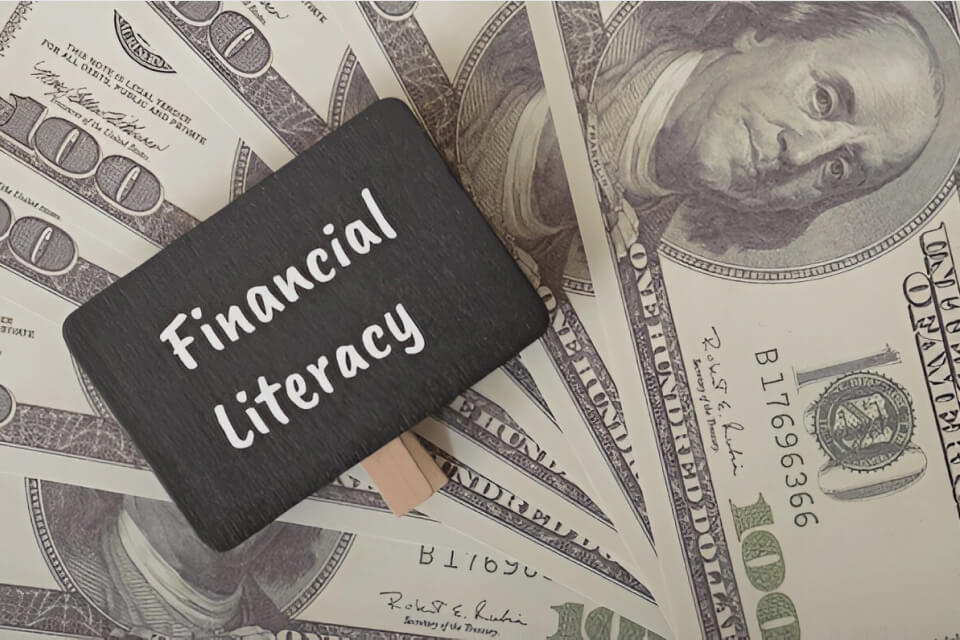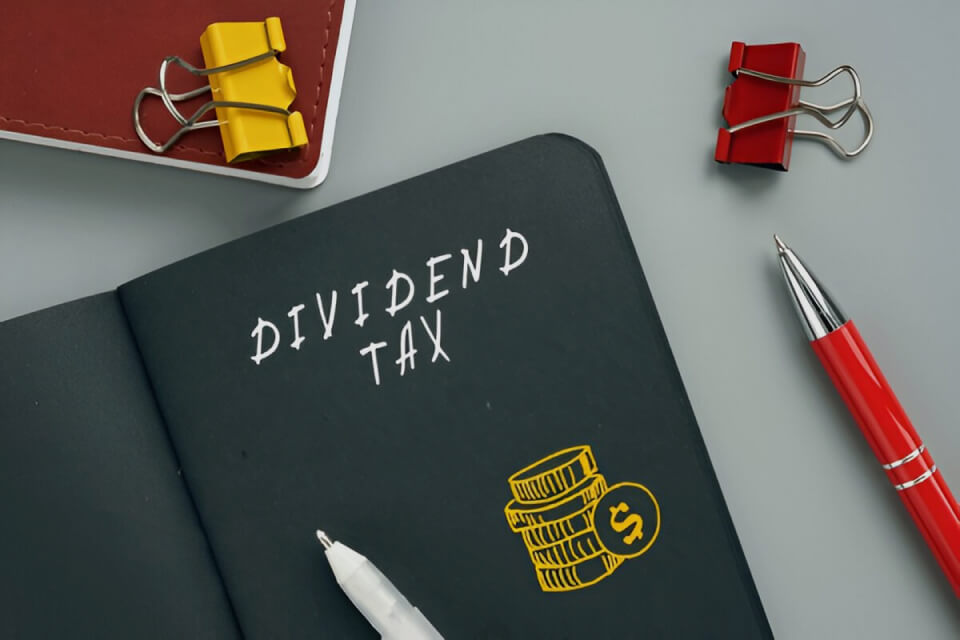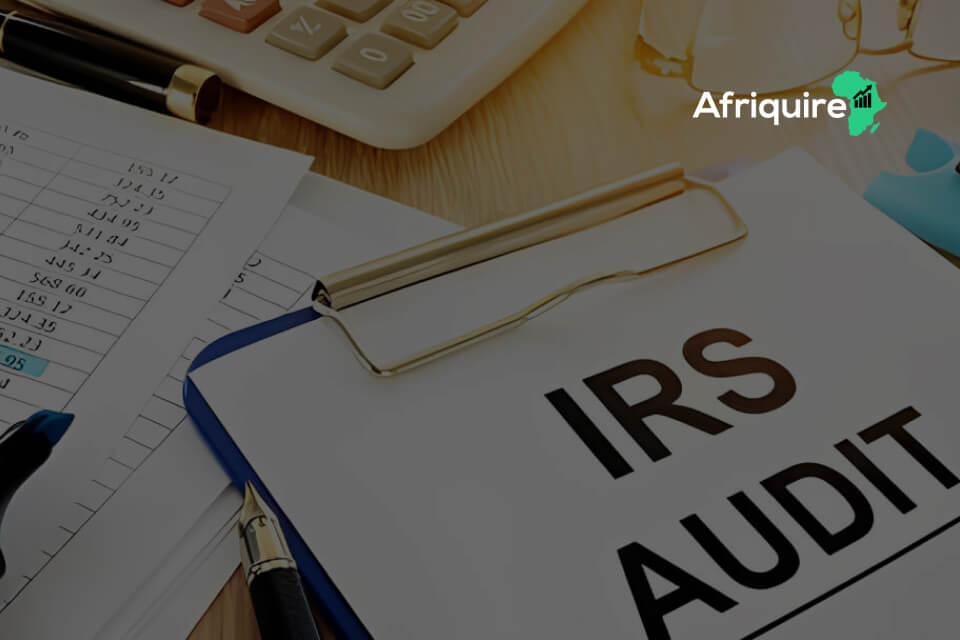- Introduction
- The Importance of Understanding Taxes on Dividend Earnings
- Taxation of Dividend Earnings: Unveiling the IRS Rulebook
- Qualified Dividends and Long-Term Capital Gains Tax
- Non-Qualified Dividends and Ordinary Income Tax
- Strategies for Managing Taxes on Dividend Earnings
- Frequently Asked Questions (FAQs)
- Conclusion
Introduction
In stock investing, it is very important to understand how income taxes affect your dividend earnings. First, investors see dividends as the golden eggs of the stock market because they provide steady income. However, taxes decide how valuable these golden eggs really are.
Also, not all dividends are taxed the same way. Some dividends get better tax rates, while others come with extra tax costs. Because of this, it is very important for investors to learn the details of dividend taxes. By knowing the tax rules, you can make the most of your dividend earnings and avoid surprises.
Imagine this: You have built a strong investment plan, and your portfolio is full of dividend stocks ready to bring you income. But wait! There is a gatekeeper — the taxman — who wants a share of your profits. The IRS will take its part, and it is important to understand how this works.
This guide will explain why knowing about dividend taxes matters. Also, it will help you understand dividend tax rules and share ways to reduce the taxes you pay on dividends while following IRS laws.
The Importance of Understanding Taxes on Dividend Earnings
Dividends reward investors for holding company stock by giving regular payments that create a steady income stream. For investors who want reliable earnings, dividends are very appealing. This is especially true when compared to capital gains, which require selling assets to make money. Instead of waiting for prices to change, investors get consistent payments. Because of this, dividends are great for long-term financial stability. Also, their predictability helps with planning and makes sure income is dependable. However, taxes on dividends can be tricky and need careful thought.
Many stock investors focus on the money they make from their stocks but often don’t pay enough attention to taxes. As a smart investor, you should remember that every dollar saved on taxes is a dollar earned. While dividend payments are attractive, you must also remember that the IRS watches your dividend income closely. The best way to keep more of your earnings is to understand how dividend taxes work. Knowing about taxation is very important. The tax you pay on dividends depends on whether they are classified as qualified or non-qualified dividends. So, let’s take a closer look at this important difference.
Taxation of Dividend Earnings: Unveiling the IRS Rulebook
As seasoned investors, we recognize that the IRS rulebook can sometimes resemble a labyrinth – especially when it comes to dividend taxation. In this section, we’ll take you on a guided tour through this rulebook, unraveling its intricacies.

The IRS Regulations Demystified
The Internal Revenue Service (IRS) wields its authority over the taxation of dividend earnings, and understanding its regulations is pivotal to ensuring you’re not caught off guard when tax season arrives. These regulations govern how dividends are taxed, impacting your bottom line and, consequently, your financial strategies.
When you receive dividends from your investments, the taxman isn’t far behind. But don’t worry; it’s not as complicated as it sounds. Here’s the breakdown:
Understanding How Dividend Earnings Are Taxed
When you earn money from your investments through dividends, the IRS has clear rules on how that money gets taxed.
Tax Rates:
To begin with, not all dividends are taxed the same way. In fact, your total income plays a big role in what tax rate you’ll pay. So, if your income is on the lower side, you may pay a lower tax rate on your dividends. But if you earn more, then your tax rate on dividends may also go up. That’s why knowing your tax bracket really matters.
Qualified vs. Non-Qualified Dividends:
Now, let’s break it down even further. Dividends fall into two main categories—qualified and non-qualified. Qualified dividends usually get taxed at a lower rate, just like long-term capital gains. But non-qualified dividends get taxed at your normal income tax rate, which is usually higher. So, this difference can have a big impact on what you keep after taxes.
Impact on Your Wallet:
So, what does this all mean for your wallet? Well, if you earn mostly qualified dividends, you could end up paying less in taxes. That’s good news for your savings. However, if your dividends are mostly non-qualified, then you might face a bigger tax bill. That’s why it’s so important to know what type of dividends you’re getting. And more importantly, you need to understand how they affect your overall tax situation.
Qualified vs. Non-Qualified Dividends: A Tax Tale of Two Categories
In the world of dividends-paying stocks, there are two distinct categories: qualified and non-qualified. But what sets them apart? Let’s break it down:
Qualified Dividends: These gems enjoy a more favorable tax rate, often mirroring the rates for long-term capital gains. As savvy investors, you’d want to make sure your dividends fit into this category whenever possible. It’s like finding a secret passage to lower taxes.
Non-Qualified Dividends: On the flip side, non-qualified dividends are treated differently. They face taxation as ordinary income, which can be less appealing to investors. Why does this matter? Well, understanding this categorization is a fundamental part of your tax optimization strategy.
Qualified Dividends and Long-Term Capital Gains Tax
In this section, we’ll delve into the world of qualified dividends and their connection to long-term capital gains tax. Let’s break it down in simple terms:
Qualified Dividends and Their Tax Advantages
Qualified dividends are the gold standard when it comes to earning money from your investments. First of all, for a dividend to count as “qualified,” it must come from a U.S. company or a foreign company that follows certain IRS rules. But that’s not the only requirement—you also need to hold the stock for a specific amount of time.
Now, here’s the best part. Qualified dividends usually get taxed at a lower rate. So instead of paying your regular income tax rate, which might be pretty high, you often pay the same lower rate used for long-term capital gains. And yes, that lower rate can mean big savings.
Because of this, qualified dividends help you keep more of your earnings. Over time, those tax savings can really add up. That’s why it’s so important to know which dividends are qualified and how to make sure they meet the rules.
So, if you want to lower your tax bill and grow your wealth, focus on earning qualified dividends. It’s one smart move every investor should understand.
Long-Term Capital Gains Tax Rate and Its Impact on Dividends
So, what exactly is the long-term capital gains tax rate? Well, it’s a special lower tax rate you get when you hold your investments for more than one year. Think of it as a reward for being a patient investor. Instead of paying your regular income tax rate, you pay a much lower rate when you sell after one year or more.
Now, let’s make it even clearer with an example. Imagine you earn $1,000 in dividends, and they qualify as “qualified dividends.” Depending on how much income you make, you might pay just 15% in taxes. But if those dividends were not qualified, you could pay your full income tax rate—maybe 22%, 24%, or even more.
So, by getting that lower tax rate, you keep more of your money. And yes, over time, those tax savings really build up. That’s why understanding long-term capital gains and qualified dividends is so important.
Again and again, smart investors focus on long-term strategies. Why? Because they lower their tax bills and increase their take-home returns. So, always aim to hold investments longer and make sure your dividends qualify. It’s one of the easiest ways to keep more of your earnings.

Non-Qualified Dividends and Ordinary Income Tax
Non-qualified dividends are those that don’t meet the criteria for the “qualified” status. They could come from sources like real estate investment trusts (REITs) or certain foreign corporations. These dividends are not eligible for the lower tax rates and are taxed as ordinary income.
How Non-Qualified Dividends Are Taxed at Ordinary Income Rates
Non-qualified dividends go straight into your regular income and get taxed at your normal income tax rate. This rate is often much higher than the rate for qualified dividends or long-term capital gains. So, you need to pay close attention to tax rules if you want to save more and earn more.
Also, it helps to clearly understand the difference between these two types of dividends. Why? Because knowing how each one gets taxed lets you plan better. And when you plan ahead, you’re more likely to keep more of your money.
Qualified dividends usually get better tax treatment with lower rates. But non-qualified dividends get taxed just like your paycheck. So, you really need to choose your investments carefully. That way, you can lower your tax burden and increase your earnings.
In the end, understanding these tax rules gives you a big advantage. It helps you build a smarter financial strategy—one that protects more of your money and grows your returns over time.
The Potential Implications for Investors
If a big part of your dividend income falls under the non-qualified category, then your tax bill could be much higher. And when that happens, it can lower your total return. So, you may end up keeping less money than you expected.
That’s why it’s so important to know the difference between qualified and non-qualified dividends. This isn’t just about technical terms. Instead, it directly affects how much money stays in your pocket. And yes, it really matters.
Again and again, investors who understand this difference make better choices. They know how to structure their portfolio in a smarter way. And because of that, they reduce their taxes and boost their net returns.
So, take the time to learn how each type of dividend works. That way, you can hold onto more of your earnings and build a stronger financial future. After all, keeping more money means growing your wealth faster.
Strategies for Managing Taxes on Dividend Earnings
Tax-efficient investing is like playing a smart game of chess with your money. You always want to stay one step ahead. So, let’s look at a few easy-to-follow strategies that can help you lower your tax bill and keep more of your dividend income.
Tax-Loss Harvesting: First, you can use losses to your advantage. If you own investments that have dropped in value, consider selling them. This can help reduce the taxes you owe on gains or dividends.
Asset Allocation: Also, where you hold your investments really matters. Placing different assets in the right types of accounts—like tax-deferred or taxable ones—can help cut down your taxes.
Qualified Dividend Investing: As we mentioned earlier, qualified dividends are taxed at a lower rate. So, focusing more of your portfolio on these types of investments can be a smart move.
Long-Term Holding: Plus, holding onto your investments for over a year can help you pay less in taxes. That’s because long-term capital gains usually get taxed at a lower rate than short-term gains.
Portfolio Diversification: Don’t forget—spreading your investments across different assets can help reduce both risk and taxes. It’s a time-tested strategy that works well for many investors.
Tax-Efficient Funds: You can also explore tax-efficient mutual funds or ETFs. These funds are built to keep your tax bill low, and they can fit nicely into a well-balanced portfolio.
Tax Planning: Always plan ahead. Don’t wait until tax season. Taking small steps throughout the year can help you stay in control and avoid surprises.
Know Your Risk and Talk to a Pro: Finally, always know how much risk you’re comfortable with. And when you’re unsure, talk to a tax expert. Getting the right advice can help you protect your investments and stay on track.

Frequently Asked Questions (FAQs)
1. What’s the tax rate for qualified dividends?
The tax rate for qualified dividends is typically the same as the long-term capital gains tax rate, which is often lower than ordinary income tax rates.
2. How can I minimize taxes on my dividend earnings?
You can employ strategies like tax-efficient investing, holding investments for the long term, and diversifying your portfolio to minimize taxes on dividend earnings.
3. Is it advisable to invest in non-qualified dividend stock?
You can invest in non-qualified dividends individual stocks or ETFs but have a strategy to balance your portfolio with qualified dividend stocks.
4. Why is it important to take note of taxes when investing in dividends stocks?
As a beginner, taxes might be negligible on your portfolio, but as your portfolio increases, the impact of taxes on your portfolio might be significant.
5. What is the common reason stock is non-qualified dividends and tax like normal income taxes?
This is to prevent investors from buying a stock because of dividends and selling quickly once they receive dividends from the dividends-paying stocks.
Conclusion
Understanding how dividend taxes work isn’t just a nice extra—it’s a must for every smart investor. Again and again, it’s clear that knowing the tax rules can truly shape your financial future. That’s why it’s so important to take this knowledge seriously.
Also, remember that knowledge is power. The more you know, the better choices you can make. So, don’t just read and forget—use what you’ve learned in this guide. Apply it to your own financial planning. And yes, your financial success is possible. But it begins with smart, informed decisions. And that starts now.



